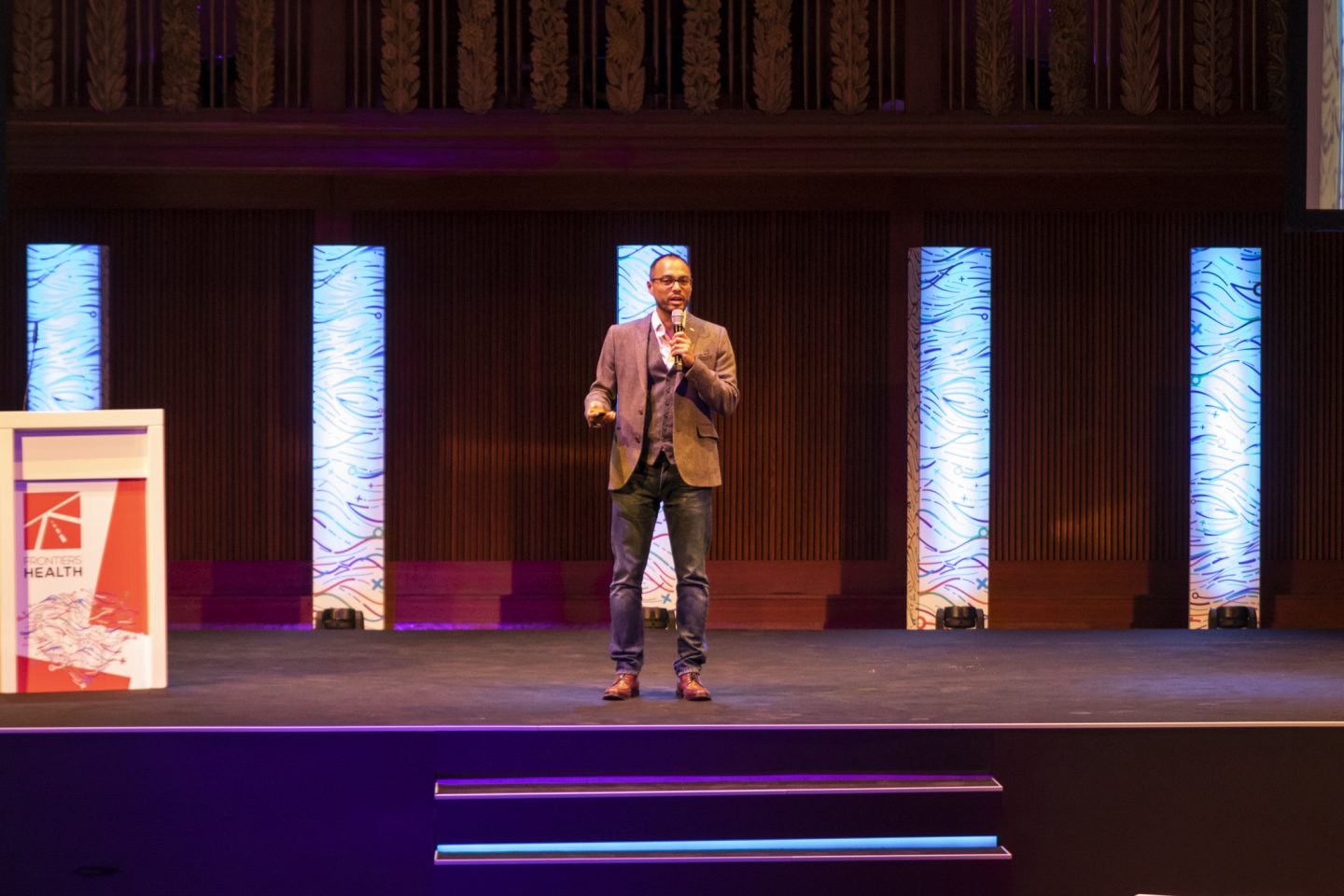There are tremendous opportunities for individuals and companies of all sizes to transform health globally, including across the Asia Pacific region. We recently met with Tony Estrella, a board director, entrepreneur, former Insurance Innovation executive and Pharma brand manager, investor, and newly minted fiction writer to discuss his distinct approach towards catalysing industry change.
You’ve lived and worked in Asia, the US, and Europe. Can you tell us more about your experience?
I’ve been fortunate to work with great people to tackle challenging health problems in all these regions. Today as Managing Director for Taliossa, I serve as an independent board director for fast growth companies including health tech, I advise startups CEOs, and sometimes invest into their businesses.
My current activities build on my previous experiences, including being a founder and operator of multiple businesses, and my most recent corporate role in driving the health innovation agenda for MetLife Asia / LumenLab.
How do you prioritise which healthcare problems to solve?
My time at MetLife and LumenLab allowed me to spend significant time learning about customer problems in 11 countries in Asia Pacific including China, India, Japan, South Korea, Hong Kong, Singapore, and Australia.
Through a lot of research and on the ground discovery, I not only connected with the vibrancy of the region, but also found the alignment of consumer interests, commercial opportunity, and viable product-market fit within three areas: cancer, human longevity – specifically in brain health, and population health models for the Asian market.
Ideally, the companies I collaborate with have core IP stemming from AI, Genomics, Blockchain, and smart devices to solve these challenges.
Although these problems are global in nature, I spend most of my time with an Asia-focused lens in how these solutions can be deployed at scale for this region.
Can you summarize the Health Tech opportunity for Asia for our readers who aren’t as familiar with the region?
Let me describe four facts to give some context.
First, let’s start with the geographic landscape. The Asia Pacific region is enormous and diverse: 4 plus billion people, 44 countries, and over 2 thousand languages.
It helps to think about the region as six main Hubs:
- China and Hong Kong
- The Indian subcontinent
- Japan
- The Korean Peninsula
- Southeast Asia and Singapore
- Australia and New Zealand
Each individual Hub has broad similarities including: economic stage of development ranging from developing to developed, cultural and lifestyle history, and climate. Keep in mind, there is still a lot of diversity within each Hub – this approach is simply a way to create a starting point for identifying and grouping commercial opportunities into relatively smaller areas. China alone is still nearly 1.4 billion people!
A second fact relevant to healthcare is how insurance works as compared to the West. Single payer government systems are more common. And the largest form of private insurance is a type of policy called critical illness. This insurance looks like a life insurance policy, except that the claims trigger is a debilitating health event such as getting diagnosed with cancer or losing eyesight or a limb to advanced diabetes. The insurance claim is paid to a policy holder as a one-time payment instead of the insurance companies reimbursing each visit to the doctor’s office.
Third, the largest fast-growth technology companies are active participants in health innovation. In the US, we hear about the role that Amazon, Google, and Apple are taking. In Asia, the technology titans are Baidu, Alibaba, and Tencent (BAT). In Southeast Asia, Grab is also very active in linking insurance, health, and their ecosystem of offerings including ride-sharing together.
To bring this to life, let me briefly give you an example using a recent example from Tencent in China.
Through one of their affiliate digital insurance platforms called WeSure, insurance policy holders will now be given more choices to manage their cancer diagnosis. WeSure has 20 million policy holders as of Dec 2018 (after only 1 year of operations), and takes a user-centric approach to insurance. As a result, in addition to a one-time financial payout at the time of a cancer diagnosis, WeSure will leverage partners to support their policy holders through their cancer management phase with curated products and services.
The expected result is an improvement in survival rates. Other life insurers such as Prudential, MetLife, and PingAn area also pursuing this approach.
In the West, this might be expected from a company like CIGNA or Kaiser Permanente, but this is a new trend for private insurers in Asia.
My last area to discuss regarding the Asia opportunity is funding for startups. Many organisations track global healthcare investments in startups by Venture Capital Funds. A key insight from these reports is that Health Tech funding today in Asia is nearly the same as in the US as measured by USD invested into startups within a given year. Asia should surpass the US in the next 12-24 months. And this data doesn’t necessarily include family office funding which is more common in Asia than in the US.
That’s very helpful, especially given the case study. As Western investors and startups consider a focus on Asia, what unexpected challenges might they face?
Given how I focus on Population Health as one of my priorities, two topics come to mind, both related to data. For background, one company I’m partnering with to succeed in this space is CXA Group, which is driving towards improved health outcomes for employers and employees across Asia. I also recently penned an article on LinkedIn which talks about the influence of AI on population health models in China. Here’s a link.
Topic 1: Can your business get the “clean” data it needs?
Technology systems, especially AI models, function best when they have consistent and accurate data. While there are lots of sources of data in Asia, especially because of the mobile-first nature of the region, that doesn’t necessarily translate into usable healthcare data.
Startups entering this region should consider how the quality and access to data affects their business operations and even monetisation approach for each Hub.
Topic 2: How quickly can you adapt to the data management and privacy approach for each Hub? Or for each country?
As I mentioned earlier, splitting Asia Pacific into the six Hubs can help shape commercial strategies. Data management and privacy is one of the key differences between these regions. For example, data in China must stay in China. As a result, Alibaba and PingAn have developed cloud businesses as alternatives to AWS.
There are also questions on how to deal with consumer privacy and data. Europe is still the strictest region in the world with their approach to GDPR. This topic will likely require a country-by-country approach.
My final point on data is to explore opportunities to tap into government-sponsored data Sandbox programmes. These allow startups to experiment with local data in order to iterate and perfect a data management approach, which suits the needs of consumers, corporate partners, government, and the startup itself.
And last, you’ve recently published your debut fiction novel Comatose. What’s the link between Health Tech, lucid dreams, and your book?
Comatose is a fiction novel about lucid dreaming, which is when you not only know you are dreaming, but you control yourself in the dream. I’m a lucid dreamer, and it’s also how I wrote the book. I dreamt the end, overall plot, characters, and key scenes.
While the story is an exciting globe-trotting thriller that explains why we dream, it’s also a way for me to talk about the future of Health Tech. In the story, I integrated my views to describe the hospital of the future which includes how Artificial Intelligence, holograms, robotics, and smart devices can be used in patient management.
My research into the book and subsequent conversations with sleep, dream, and coma experts have made me realise how early we are in understanding these three areas. It’s like the knowledge we had about space travel in the 1950’s – we know some basics, but have lots of unanswered questions. As a result, I’m excited to play an active role in sleep science as a 4th area of focus for me.
We managed to cover quite a lot! Thanks so much for your insights and time.
If you’d like to learn more about Tony, please visit his website at www.tonyestrella.com. You can also find his book in UK bookstores at Waterstones and Foyles, or on Amazon globally.



